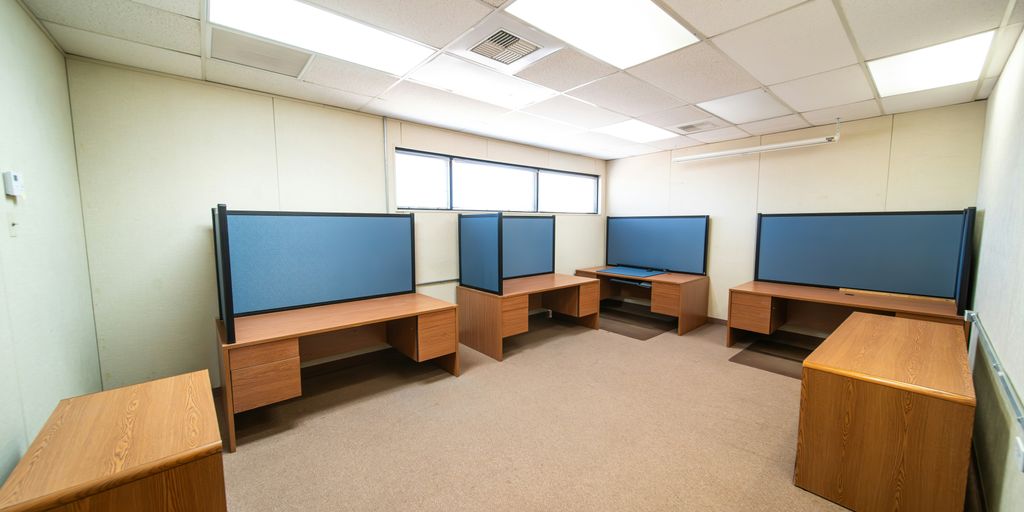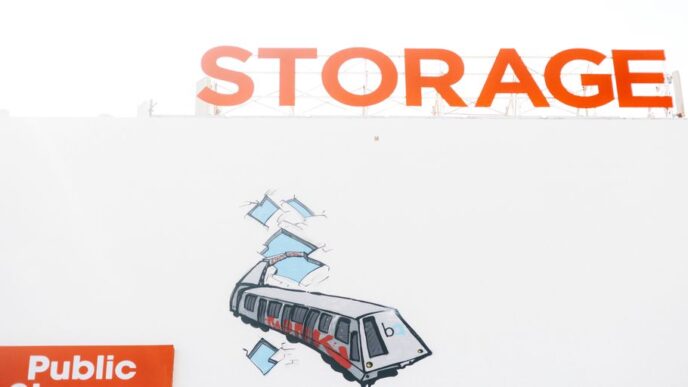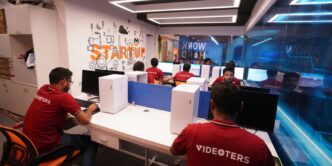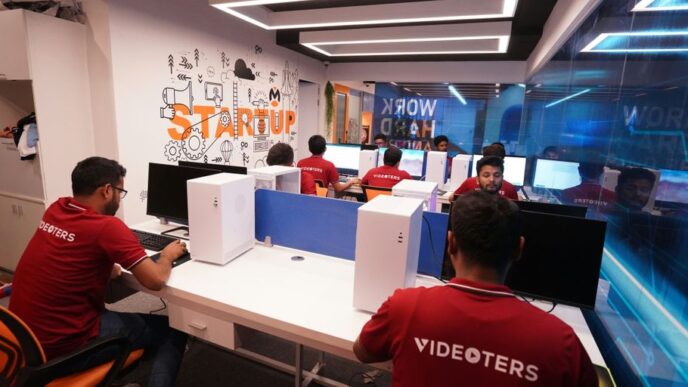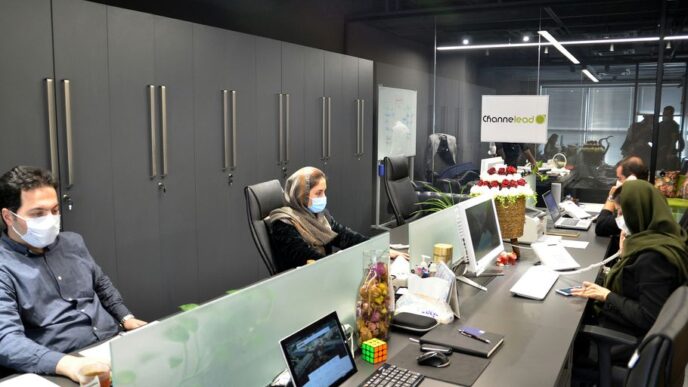Running a business these days can feel like juggling a dozen balls at once. You’ve got sales, marketing, customer service, and all the behind-the-scenes stuff that keeps things moving. It’s a lot. So, how do you make sure everything is running smoothly, especially when things get hectic? That’s where the idea of an operation command center comes into play. Think of it as the central nervous system for your business, giving you a clear view of what’s happening and helping you make smart moves.
Key Takeaways
- An operation command center gives you a bird’s-eye view of everything happening in your business in real-time.
- It helps consolidate and analyze data, making it easier to understand what’s going on and make good decisions.
- These centers are vital for keeping things secure, spotting cyber threats, and watching over physical safety.
- They act as a central point for coordinating responses during emergencies and managing crises effectively.
- Using an operation command center can lead to better teamwork, smoother communication, and more efficient use of resources.
The Core Functions of an Operation Command Center
Think of an operation command center as the central nervous system for a modern business. It’s where all the important information comes together, allowing folks to see what’s happening across the board and make smart choices. Without this kind of central hub, businesses can easily get bogged down by scattered data and slow responses.
Real-Time Visibility and Operational Monitoring
This is all about having eyes on everything, all the time. Instead of waiting for reports that might be outdated by the time you get them, a command center shows you what’s going on right now. This means you can watch production lines, track shipments, or monitor system performance as it happens. It’s like having a live dashboard for your entire operation. This kind of constant oversight helps catch small issues before they turn into big problems. For instance, if a key piece of equipment starts showing unusual readings, the team can see it immediately and address it, perhaps preventing a costly breakdown. This constant stream of information is key to keeping things running smoothly. You can get a better handle on your day-to-day activities by monitoring operations.
Efficient Data Consolidation and Analysis
Businesses today generate a ton of data from all sorts of places – sales, customer service, IT systems, you name it. Trying to piece all that together manually is a huge headache and often leads to mistakes. A command center pulls all this information into one spot, making it much easier to sort through. It’s not just about collecting data; it’s about making it useful. By bringing different data streams together, you can start to see patterns and connections you might have missed otherwise. This unified view helps in understanding how different parts of the business are performing and interacting.
Informed Decision-Making Capabilities
When you have clear, up-to-the-minute information, making decisions gets a lot simpler. Instead of guessing or relying on gut feelings, leaders can look at the data presented in the command center and make choices based on facts. This leads to better outcomes because the decisions are grounded in what’s actually happening. For example, if sales data shows a sudden dip in a particular region, the command center can quickly provide related information, like marketing campaign performance or competitor activity in that area, allowing for a targeted and effective response. This ability to access and interpret data quickly is what separates businesses that react from those that proactively shape their future.
Enhancing Security and Risk Management
Keeping your business safe and sound is a big deal, right? A command center really helps with that. It’s like having a watchful eye over everything, making sure no unexpected problems pop up.
Critical Infrastructure Surveillance
Think about all the important stuff your business relies on – servers, power systems, maybe even physical locations. A command center keeps tabs on these in real-time. If a server starts acting up or the power flickers, the team gets an alert right away. This means they can jump on it before it causes a bigger headache, like shutting down your website or stopping production. It’s all about catching small issues before they turn into major disruptions. We’re talking about keeping the lights on, literally and figuratively.
Cybersecurity Threat Detection
In today’s world, cyber threats are a constant worry. A command center acts as a central point for monitoring network activity. It can spot unusual patterns that might signal a hack attempt or malware. By analyzing traffic and system logs, it can flag suspicious behavior that human eyes might miss. This early warning system is key to stopping cyberattacks before they can steal data or damage your systems. It’s like having a digital security guard who never sleeps, constantly scanning for intruders. You can find out more about building a security operations center here.
Physical Security Oversight
Beyond the digital world, command centers also keep an eye on physical security. This could involve monitoring security cameras, access control systems, and even environmental sensors. If a door is forced open after hours or a temperature sensor in a critical area goes off, the command center alerts the right people. This helps prevent theft, vandalism, or damage to sensitive equipment. It provides a unified view of your entire security posture, both online and offline, giving you peace of mind.
Streamlining Emergency Response and Crisis Management
When things go sideways, and they inevitably do, having a solid plan for emergencies is a lifesaver. Operation command centers are really the backbone of this. They act as the central point where all the action gets coordinated, making sure everyone knows what’s happening and what needs to be done.
Centralized Coordination Hub
Think of the command center as the brain during a crisis. It’s where all the information flows in and where decisions are made. This setup means you’re not scrambling to figure out who’s doing what. Instead, you have a clear picture of the situation, allowing for quicker, more effective responses. It’s about having one place to manage everything, from tracking resources to communicating with different teams. This kind of organization is vital for managing public health emergencies, for example, as discussed in articles about Emergency Operations Centers.
Real-Time Field Data Integration
Getting accurate information from the ground is tough during a chaotic event. Command centers can pull in live data from various sources – think cameras, sensors, or even reports from people on site. This means the people in charge aren’t working with old news. They see what’s happening now, which helps them adjust plans on the fly. It’s like having eyes and ears everywhere, all feeding into one dashboard.
Cross-Agency Collaboration
Emergencies rarely stick to one department or even one organization. You might need police, fire, medical, and maybe even utility companies all working together. The command center provides a common platform for these different groups to share information and coordinate their efforts. This avoids confusion and makes sure everyone is pulling in the same direction, which is a big deal when every minute counts.
Boosting Team Collaboration and Communication
When everyone’s on the same page, things just run smoother, right? That’s where the operation command center really shines for team collaboration and communication. It’s not just about having screens everywhere; it’s about making sure the right people see the right information at the right time.
Integrated Communication Tools
Think of the command center as the ultimate communication hub. It brings together all sorts of tools – instant messaging, video conferencing, and shared digital workspaces – into one place. This means no more hunting through emails or separate chat apps. Everyone has access to the latest updates, whether it’s a quick message from a field tech or a full briefing from management. This kind of setup really helps keep things moving, especially when you’re trying to coordinate complex tasks or respond to unexpected events. It’s all about making sure conversations and information flow freely and efficiently, which is key for any modern business operation. We’re talking about making sure that the IT team, the folks on the ground, and the decision-makers can all talk to each other without a hitch. It’s about building a connected team, and the command center is the place where that happens. You can find some great ideas for setting up these spaces at command center design.
Real-Time Information Sharing
This is where the magic really happens. Instead of waiting for reports or updates, the command center provides a constant stream of live data. Imagine a situation where a delivery is delayed; the logistics team can see it immediately, inform sales, and customer service can proactively reach out to the affected clients. This shared awareness means teams can adjust plans on the fly, preventing small issues from becoming big problems. It’s about creating a unified operational picture so everyone understands the current status of operations, from the top floor to the front lines.
Unified Operational Awareness
Ultimately, the goal is to have everyone working with the same understanding of what’s going on. This means that whether you’re looking at production numbers, customer service tickets, or security alerts, the information is consistent and readily available. It helps teams prioritize tasks, understand how their work impacts others, and make better, faster decisions. When everyone shares this common view, it cuts down on confusion and boosts overall productivity. It’s like having a shared brain for the entire operation, making sure all the different parts work together effectively.
Driving Operational Efficiency Through Data
In today’s business world, data is everywhere. The trick isn’t just collecting it, but actually using it to make things run smoother. That’s where a good operation command center really shines. It takes all that raw information from different parts of your business and turns it into something useful, something that helps you work smarter, not harder.
Optimized Resource Allocation
Think about your team’s time and equipment. Are they being used in the best way possible? A command center can show you where resources are sitting idle or where they’re stretched too thin. By looking at real-time data, managers can see which projects need more hands, which machines are underutilized, or even when certain staff members are consistently overloaded. This kind of insight lets you move people and equipment to where they’re most needed, cutting down on wasted time and money. It’s about making sure every asset is pulling its weight.
Automated Workflow Integration
Manual processes are often slow and prone to mistakes. A command center can help automate many of these routine tasks. For example, instead of someone manually checking if a certain step in a production line is complete, sensors can feed that information directly into the command center. This data can then automatically trigger the next step in the workflow. This not only speeds things up but also reduces the chance of human error. It frees up your employees from repetitive checks so they can focus on more important work, like problem-solving or talking to customers. We’re talking about making the day-to-day operations flow more like a well-oiled machine.
Proactive Issue Identification
Instead of waiting for a problem to blow up, a command center helps you spot trouble before it gets big. By constantly monitoring key performance indicators (KPIs) and operational data, you can see when things start to go off track. Maybe a machine’s temperature is creeping up, or a delivery route is taking longer than usual. These small signals, when caught early, can be addressed with simple adjustments. This prevents minor hiccups from turning into major disruptions that cost a lot of time and money. It’s like having a built-in early warning system for your entire operation, helping you maintain consistent service delivery.
Elevating the Customer Experience

When it comes to keeping customers happy, a central operation command center can make a big difference. It’s not just about fixing problems when they pop up; it’s about getting ahead of them. Think about it: if you can see what’s happening across your business in real-time, you can spot potential issues before they even affect a customer. This means fewer headaches for them and a smoother experience overall.
Proactive Customer Engagement Strategies
This is where the command center really shines. By looking at customer feedback, support tickets, and even social media chatter, you can start to see patterns. Maybe a lot of people are asking the same question, or perhaps there’s a glitch in a product that’s causing frustration. The command center gives you the tools to spot these trends early. This allows your team to address the root cause before it becomes a widespread problem. For example, if you notice a spike in calls about a specific feature, you can quickly get a message out to customers explaining the issue and when it will be fixed, or even provide a workaround. It’s about being one step ahead, showing customers you’re listening and that you care about their experience.
Streamlined Customer Support Management
Customer support can get messy fast, with inquiries coming in from everywhere – phone, email, chat, social media. A command center acts like a central inbox for all of it. All those customer interactions get logged and prioritized in one place. This means your support team isn’t chasing down emails or missing messages. They can see what needs attention right away, respond faster, and make sure no one falls through the cracks. This quick, organized approach makes customers feel heard and valued, which is a big win for keeping them coming back. You can even track how long it takes to resolve issues, helping you find ways to speed things up even more. It’s all about making sure every customer gets the help they need, when they need it. You can find out more about aligning business objectives with customer experience initiatives at align business objectives.
Feedback Loop Integration
What happens to all that customer feedback? Ideally, it should go back into making your business better. The command center makes this happen. It collects feedback from all those different channels and makes it easy to analyze. This data can then be shared with product development, marketing, or whoever needs to know. For instance, if customers are consistently mentioning a desire for a new feature, that information can go straight to the product team. Or, if there’s a recurring complaint about a process, operations can work on fixing it. This continuous cycle of listening, analyzing, and improving is what turns a good customer experience into a great one. It shows customers that their opinions matter and that they’re helping to shape the future of your business.
Ensuring Compliance and Data Integrity
Staying on the right side of regulations isn’t just about avoiding trouble; it’s about building a solid foundation for your business. When your operations consistently meet legal and industry standards, you build trust with everyone involved – customers, partners, and even your own team. The Operation Command Center plays a big part in making this happen smoothly.
Audit-Proof Data Capture
One of the biggest headaches for businesses is proving they’re doing things correctly, especially when auditors come knocking. Our Command Center is built to capture data in a way that’s tamper-proof. Think of it like a digital notary for your daily operations. This means every step, every measurement, every decision is recorded reliably. This reliable record-keeping is key to demonstrating your commitment to regulations. It makes showing compliance straightforward, not a frantic search through scattered files. This level of detail helps avoid penalties and makes sure your business operates with integrity, which is pretty important these days. It’s about having confidence that your data is accurate and can be trusted when it matters most, like during an audit or when you need to verify pharmaceutical data integrity principles.
Regulatory Adherence
Keeping up with rules and laws can feel like a full-time job. The Command Center helps by integrating compliance checks directly into your workflows. Instead of relying on people to remember every single rule, the system guides them. It flags potential issues before they become problems, making sure that standard operating procedures are followed to the letter. This proactive approach means you’re less likely to fall out of compliance, which saves a lot of headaches and potential fines down the line. It’s about making compliance a natural part of how you work, not an afterthought.
Insurance Standard Compliance
Beyond government rules, there are also the standards set by insurance companies. Meeting these can sometimes mean lower premiums and better coverage. The Command Center helps here too. By having clear, verifiable data about your operations, you can easily show that you’re managing risks effectively. If you ever need to make a claim, having this organized, audit-proof data readily available means the process is much smoother. It reduces the chances of a claim being denied because of missing or unclear information. This not only protects your business financially but also shows your insurance providers that you’re a responsible operator, which can lead to better terms and conditions.
Wrapping It Up
So, looking back at all this, it’s pretty clear that having a central spot to keep an eye on everything is a big deal for businesses today. It’s not just about watching screens; it’s about making sure everyone’s on the same page, dealing with problems fast, and generally making things run smoother. From keeping things secure to making sure customers are happy, these command centers really do help companies work better. As things get more complicated out there, having one of these setups isn’t really a choice anymore, it’s just what you need to do to keep up.
Frequently Asked Questions
What exactly is an operation command center?
Think of an operation command center as the brain of a business. It’s a central place where people watch over everything that’s happening, like sales, customer service, and even security, all at the same time. This helps everyone see the big picture and make smart choices quickly.
How do command centers help keep a business safe?
Command centers are super helpful for keeping things safe. They can watch security cameras to spot trouble, keep an eye on computer systems for cyber threats, and make sure only the right people can get into important areas.
What role do command centers play during emergencies?
When something goes wrong, like a power outage or a big customer issue, the command center acts like a control room for fixing it. Everyone involved can talk to each other easily and see what’s happening, so they can solve the problem faster.
Can command centers improve how teams work together?
Yes, they do! Command centers have tools like video calls and chat rooms that let different teams work together and share information instantly. This means everyone is on the same page, which makes projects run smoother.
How do command centers make businesses more efficient?
Command centers use data to make things run better. They can see where resources like staff or equipment are needed most, and they can even automate some tasks. This helps businesses save time and money by fixing problems before they get big.
How do command centers help make customers happier?
By keeping an eye on customer feedback and making sure customer service issues are solved quickly, command centers help businesses give customers a better experience. They can even predict what customers might need next, making them happier.


